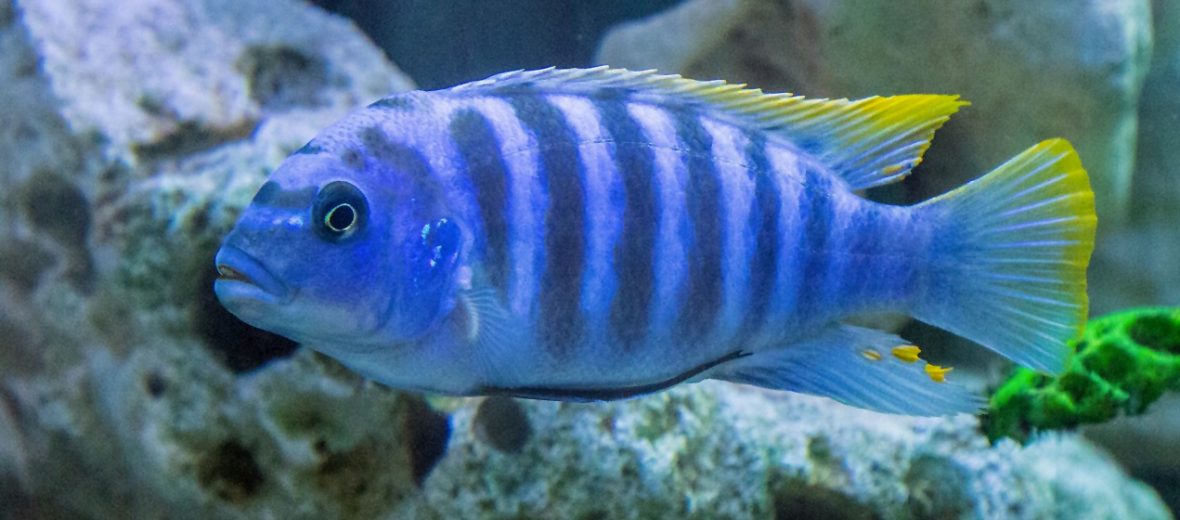
The cichlid can be found in the massive lakes of Africa and the rivers and lakes of Central, South, and North America. These diverse fish only dwell in fresh water bodies. There are a wide variety kept in aquariums, around the world. Due primarily to habitat destruction, but also to over-collection for the pet trade, and pollution, these amazing fish are listed anywhere from Least Concern to Critically Endangered by the IUCN.
First the Stats…
Scientific name: Cichlidae
Weight: Up to 5.2 lbs.
Length: Up to 3 feet
Lifespan: Up to 60 years
Now on to the Facts!
1.) Cichlids encompass a wide range of diets, from herbivores (eat plant matter), carnivores (eat animal matter), omnivores (eat plant and animal matter), planktivores (feed on plankton), to detrivores (scavengers that eat left over plant and animal matter). This is based on the species of cichlid.
2.) A variety of tactics are incorporated in order to capture food. The predatory species will do everything from mimicking the colors of more peaceful fish to lure prey in close; while others are ambush predators; and some even play dead to trick prey into close contact.
3.) Predators of cichlids consist of everything from larger fish, to birds, to crocodilians.
4.) Unfortunately, some species have been introduced to foreign bodies of water, where these fish quickly become invasive.
5.) Most cichlids have the ability to adapt rather quickly to varying environmental conditions that might otherwise kill other fish.
But wait, there’s more on the cichlid!
6.) Cichlids have the fastest evolution of any known invertebrate. For example, some species have evolved from a single species into around 500 in a mere 1 million years.
7.) Males can be either monogamous (mate for life) or polygamous (1 male mates with multiple females), based on the species.
Did you know…?
Generally speaking, cichlids tend to be aggressive towards 1 another and to other fish.
8.) Pit spawning is common with a variety of cichlids. This is were an impression is dug out in the substrate in which the male and female will then use for procreation.
9.) Some females can lay upwards of 20,000 eggs.
10.) In certain female cichlids, mouth-brooding is common. This is where the fry are kept safe in mom’s mouth.
But wait, there’s still more on the cichlid!
11.) Many larger cichlids are popular as game fish. The peacock bass of South America, for instance, is 1 of the most popular sportfish.
12.) The blood parrot cichlid is considered 1 of the most popular pet cichlids. Another popular choice are oscars.
Now a Short Cichlid Video!
Be sure to share & comment below! Also, check out the Critter Science YouTube channel. Videos added regularly!
Want to suggest a critter for me to write about? Let me know here.
Think you know a lot about critters? Try your hand at these fun, free quizzes:



